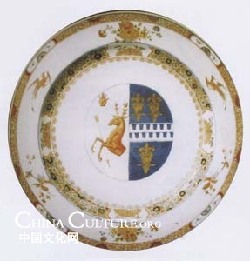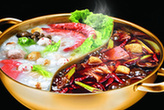In the 17th and 18th century, Chinese works of art gained much popularity in European countries. This prevalence, led by the French court, pushed trade between China and Europe to a peak. Among those works of art, Chinese Armorial Porcelain was one of the brightest pearls in the tidal wave of Chinese works of art for sale abroad.
 |
|
|
Armorial Porcelain belongs to a kind of Requirements for Porcelain, which means Chinese artisans paint emblazonments provided by European merchants on the porcelain. This kind of Requirements for Porcelain has been in great demand since 16th century, because of high value on historical relic collection and art admiration, for its unique figure and painted patterns, characteristics of both Chinese traditional works of art and European ornament style.
Before the introduction of Chinese Armorial Porcelain, there was already a tradition of painting heraldries on crockery in Europe. European Armorial began to appear on the battlefield in the 12th century. In order to identify between soldiers, ourselves, and an enemy covered by a suit of armor, both sides painted heraldry on their shields. Later, it flourished in decorations on other utensils as symbols of royal families, nobles, armies, parties and individuals.
After the beginning of trade between China and European countries in the 16th century, no doubt that Chinese porcelain became one of the most high demand goods, because Europe can not produce porcelain. The number of this kind of collection became the symbol of showing off their fortune by European noble men and rich merchants. So they could recognize them, Portuguese and Spanish merchants who controlled the trade between China and European countries in the 16th century began to customize porcelains with European heraldries from China. This is how Chinese Armorial Porcelain came into being.
 |
|
|
Because of the skill required for blue and white porcelain, the Chinese Armorial Porcelain was not popular until the maturation of multicolored porcelain and the appearance of early Fencaici in the 18th century. Most of the existent Chinese Armorial Porcelain are Guangcaici made in the 18th century, thus it becomes the representative of Chinese Armorial Porcelain. Beginning in the later 18th century, European techniques of porcelain making matured and developed independently from China’s, and importation from China declined. The resplendent age of Chinese Armorial Porcelain ended in the early 19th century.





Why not rent a boyfriend, or girlfriend to please parents during the Spring Festival?